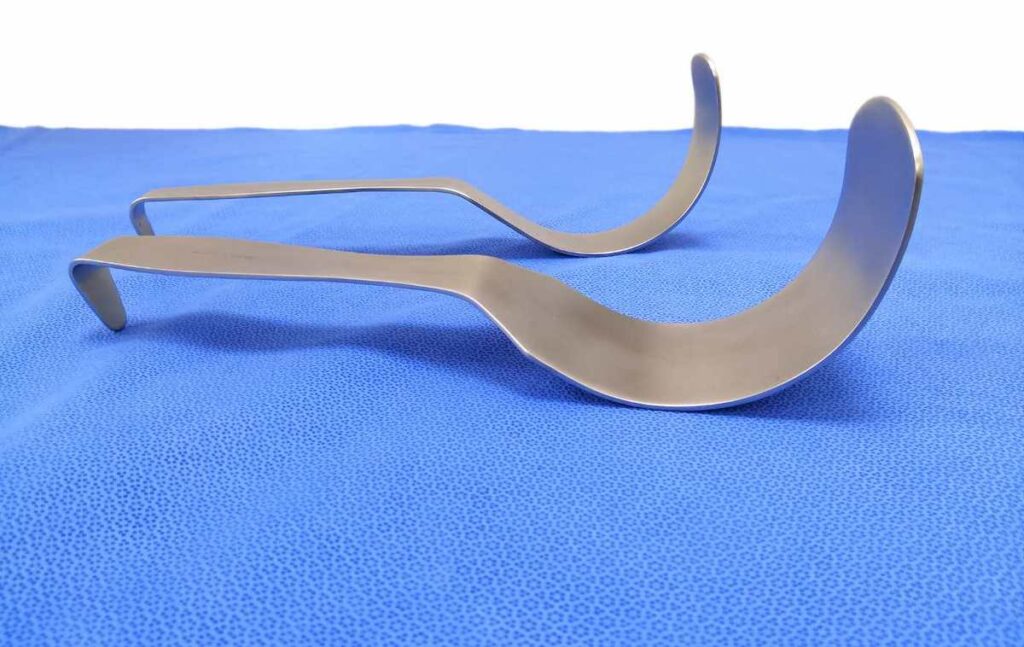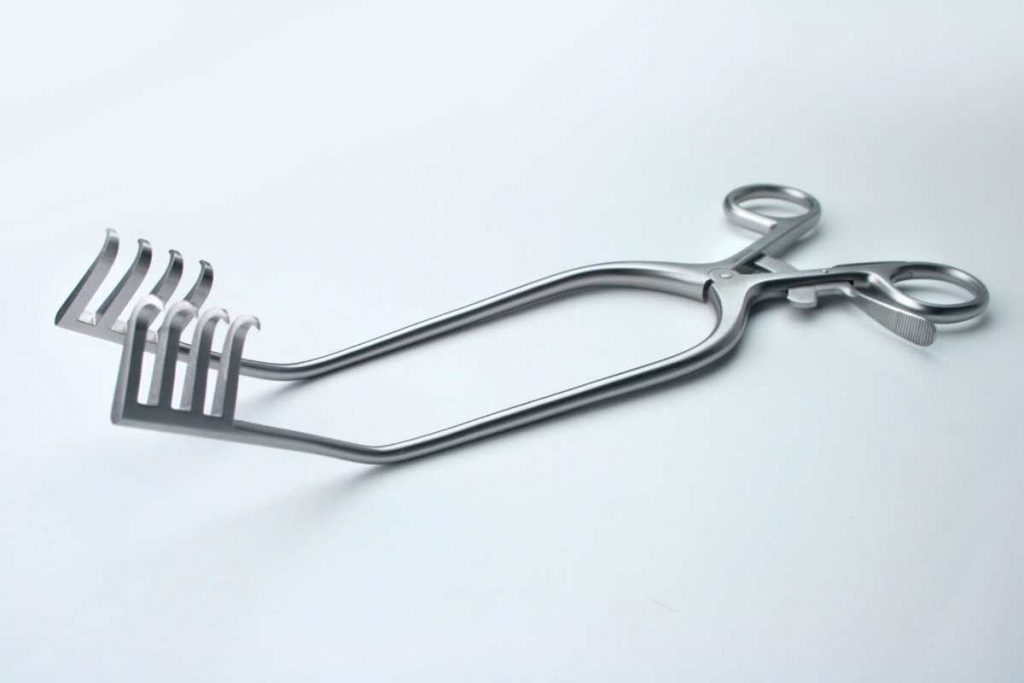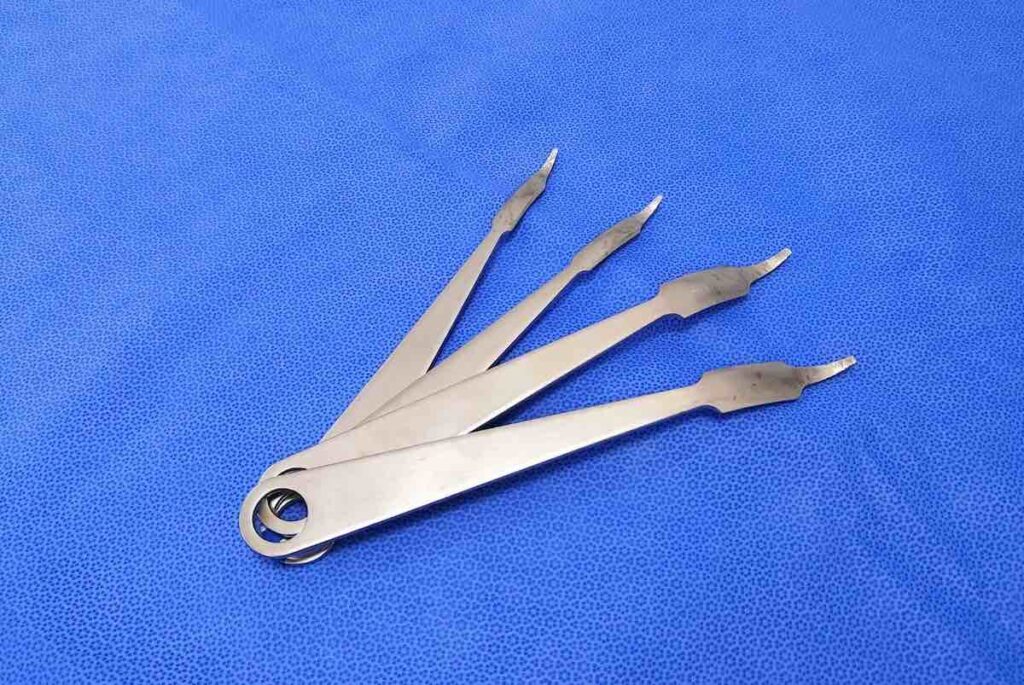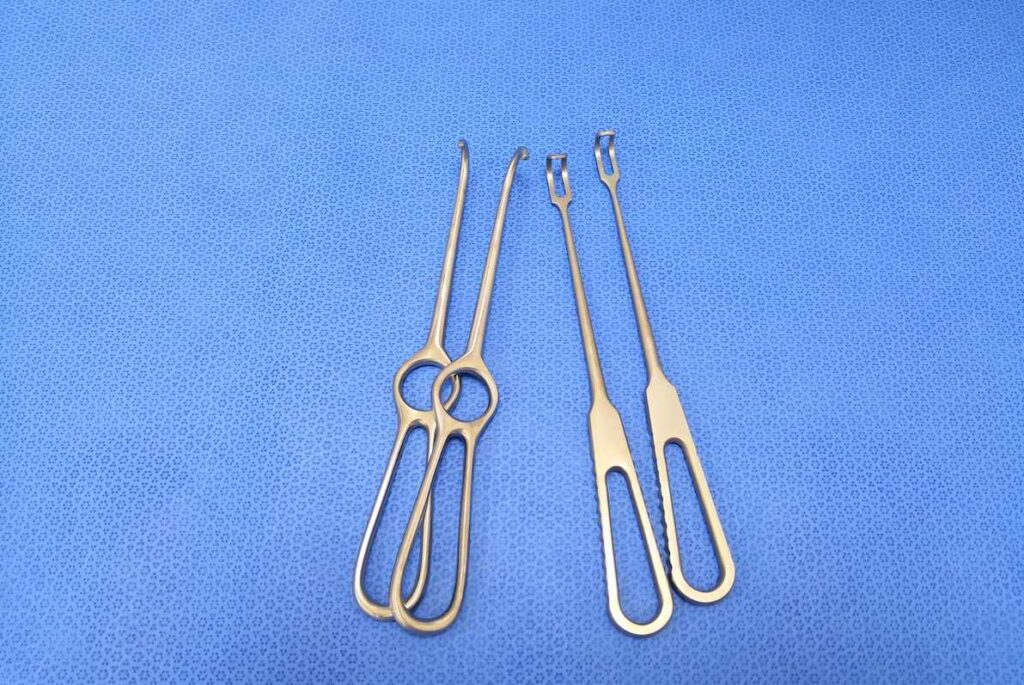Surgical retractors help surgeons see and access the operation site by holding tissue and organs out of the way. While some retractors are self-retaining (able to stay in place by themselves), others demand manual handling. Surgical assistants or nurses often spend hours gripping handheld or manual retractors during surgeries, which can lead to hand fatigue and discomfort.
This article discusses the correct techniques for holding common retractors during surgery and provides tips to prevent fatigue during long surgeries.
The many types of retractors
Surgeons and their assistants work with many different retractors, each designed for specific uses during surgery. Some retractors like the Army-Navy are convenient for superficial procedures as they are small and light. Large retractors like the self-retaining Balfour retractor are used for major surgeries where wider access is needed.
The shape of each retractor matches its target function. The Langenbeck, for example, has a gentle crescent-shaped curve at the tip to assist in retracting the skin and subcutaneous tissues. Retractors can also contain different materials, such as plastic or metal. Plastic retractors are partly or completely disposable; they generally weigh less and may be associated with fewer surgical site infections than their metal counterparts.
While handheld retractors come in different designs and materials, they share a key feature: they need proper handling and positioning to work well and prevent user fatigue. Understanding how to position various retractors helps maintain steady pressure while reducing strain on the hands and wrists. A proper grip also allows the assistant to adjust tension quickly when the surgeon needs a different view of the surgical field.
The Army-Navy retractor has a double-ended design that makes it useful for two different retraction depths. The shorter “Army” end works well for skin retraction, while the longer “Navy” end reaches into subcutaneous tissue.
When holding this retractor, place your thumb and middle finger through the handle loops with your index finger along the shaft for added control. This grip lets you adjust pressure easily while keeping the blade steady against tissue. For longer cases, you can switch between fingers to prevent hand fatigue.
Senn retractor
The Senn retractor is a two-ended, hooked retractor. One end of the Senn is L-shaped while the other has three prongs that can be either sharp or blunt.
Hold the Senn retractor with your thumb and index finger near the curved portion, using your middle finger for support and control. This three-finger technique helps maintain precise movements during precise surgeries, such as hand surgeries. The small, lightweight design allows for quick repositioning.
Deaver retractor
The Deaver is a single-ended, handheld retractor with a broad, curved metal blade that maintains steady retraction during long procedures.

Grip the retractor handle with your hand, keeping your elbow close to your body for stability. Your non-dominant hand can support the blade end for deep tissue retraction. To reduce arm fatigue, stand with your feet shoulder-width apart and use your body weight rather than arm strength to maintain retraction.
Ribbon (malleable) retractor
The aluminum steel ribbon (malleable) retractor gets its name from its malleable or flexible shape, which allows you to adjust the shape during surgery without removing the retractor. This retractor can have various widths, depending on the type of surgery.
Before inserting, mold the retractor blade to match the cavity’s contour. Avoid sharp bends that could weaken the metal. Hold the handle firmly with one hand and use your other hand to guide the blade into position. Once placed, maintain steady pressure through the handle while keeping your wrist straight.
Ferreira retractor
This specialized retractor is a helpful tool for reconstructive surgeries, especially those of the breast. It consists of fine-toothed ends and a light source to guide the surgeon.
The Ferreira retractor works best when the user holds it with a pencil grip near its pivot point. Its ends need gentle handling to protect delicate tissues during plastic surgeries. Keep your movements small and controlled by using finger movements rather than whole-hand adjustments. For longer cases, safely rest your hand against the patient to maintain precise control and reduce muscle strain.
Richardson retractor
The Richardson (Rich) retractor is a single-ended retractor, available in multiple sizes: small, medium, or large.
The Richardson requires a strong but controlled grip. Hold the handle with your full hand, positioning your thumb along the upper surface for pressure control. Keep your wrist straight and use your shoulder muscles rather than your forearm to maintain retraction. When working deep in a surgical site, use your other hand to stabilize the shaft near the blade to help prevent any unwanted movements.
Gelpi retractor
The Gelpi is a self-retaining, curved scissor-shaped retractor that employs a ratcheted locking mechanism to hold tissues apart.
Opening the retractor requires one or both hands. For the one-hand technique, use your thumb and index, middle, or ring finger to separate the finger rings. For the two-hand technique, use your thumbs and index finger to open the ring fingers of the instrument while keeping the tension even on both sides. Once positioned, gently close the handles until you reach the desired tissue separation. Ensure to avoid over-tightening. To prevent muscle fatigue during long procedures, only hold the retractor when adjusting the opening width.
Weitlaner retractor
The Weitlaner retractor is another scissor-shaped retractor that consists of 2–6 prongs (also called blades or teeth) on each side. The prongs can be sharp or blunt.

To use the Weitlaner, grip the finger rings with your dominant hand while using your other hand to guide the tips into position. Squeeze the handles slowly to engage the ratchet mechanism, listening for each click to ensure equal pressure distribution. To ensure stability, place the retractor at right angles to the incision and check that all teeth are gripping the intended tissue evenly.
Balfour retractor
The Balfour is a three-sided retractor that requires proper setup for effective use in abdominal surgery.
When mounting it to the table, keep the central blade angled slightly toward the surgical field. Hold the side blades steady as you adjust their spread using the wing nuts; this technique helps prevent sudden movements. When participating in a long surgery, periodically check the tightness of all adjustment points, as the weight of retracted tissue can cause gradual loosening.
Finochietto retractor
The Finochietto retractor is known as the “rib spreader” because it specifically separates the ribs in thoracic surgery.
This retractor needs smooth, controlled handling to prevent rib injury. Grip the crank handle firmly while keeping your other hand on the frame for stability. Turn the crank mechanism ever so slowly, pausing between adjustments to let the tissue adapt. As you’re holding the instrument, make sure the ratchet is fully engaged to prevent an unexpected closure.
Tebbetts retractor
The Tebbetts retractor is similar to the Ferreira retractor; it’s specialized for reconstructive breast surgery. The main difference between the Tebbetts and Ferreira is the shape of the blade tip: Tebbetts’ tip has corrugated teeth for extra tissue grip.
The Tebbetts retractor works best with precise finger control. Hold the handle using your middle three fingers. Keep your index finger extended along the shaft for fine adjustments. When retracting breast tissue, remember to maintain steady upward pressure while avoiding side-to-side movement. Change your grip position periodically to prevent hand fatigue.
Harrington (sweetheart) retractor
The Harrington retractor is a single-ended retractor with a large, curved end resembling a heart shape. The design of the end is able to reduce organ injury during retraction.
For initial placement, grip the handle of the Harrington with your dominant hand while using your other hand to support the curved blade. When retracting tissue, maintain gentle, consistent pressure. Your grip should allow quick release when necessary, so aim to keep your fingers relaxed but ready around the handle rather than tightly clenched.
Adson cerebellar retractor
The Adson cerebellar retractor is a self-retaining retractor that features shallow blades with angled-down arms. Its delicate blade requires precise control during intracranial surgery.
To use the Adson cerebellar retractor, hold the handle with a modified pencil grip, placing your thumb and first two fingers near the upper portion of the instrument. Your ring and little fingers should rest lightly on a stable surface to eliminate hand tremor. When retracting brain tissue, use gentle pressure and avoid any sudden movements.
Hohmann retractor
The Hohmann retractor, also known as the bone lever retractor, is a single-ended, handheld retractor. This retractor characteristically consists of a curved blade with a finger-like tip. This curved design works best with a two-point control technique during orthopedic procedures.

Grip the handle firmly with your dominant hand while using your other hand to guide the tip of the blade around bone structures. Once you have positioned the retractor, maintain steady leverage by keeping your elbow close to your body and using your shoulder muscles rather than your wrist. For extended retraction, lessen fatigue by bracing your forearm against a stable surface and standing with your feet shoulder-width apart.
Further viewing and reading
- Video on the relationship between working with retractors and fatigue
- Video playlist showing some of the most commonly used instruments including some of the retractors that we have mentioned in the article:
- Online resource showing images and main characteristics of commonly used retractors:

